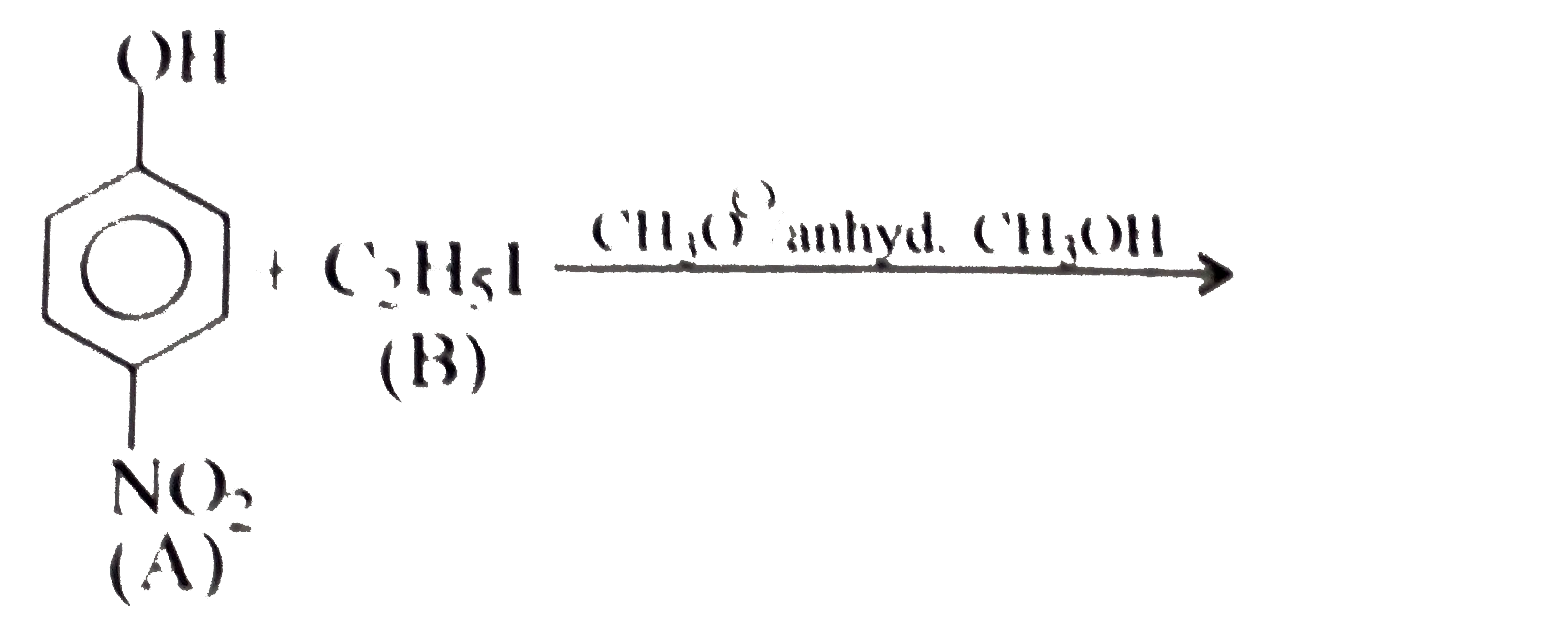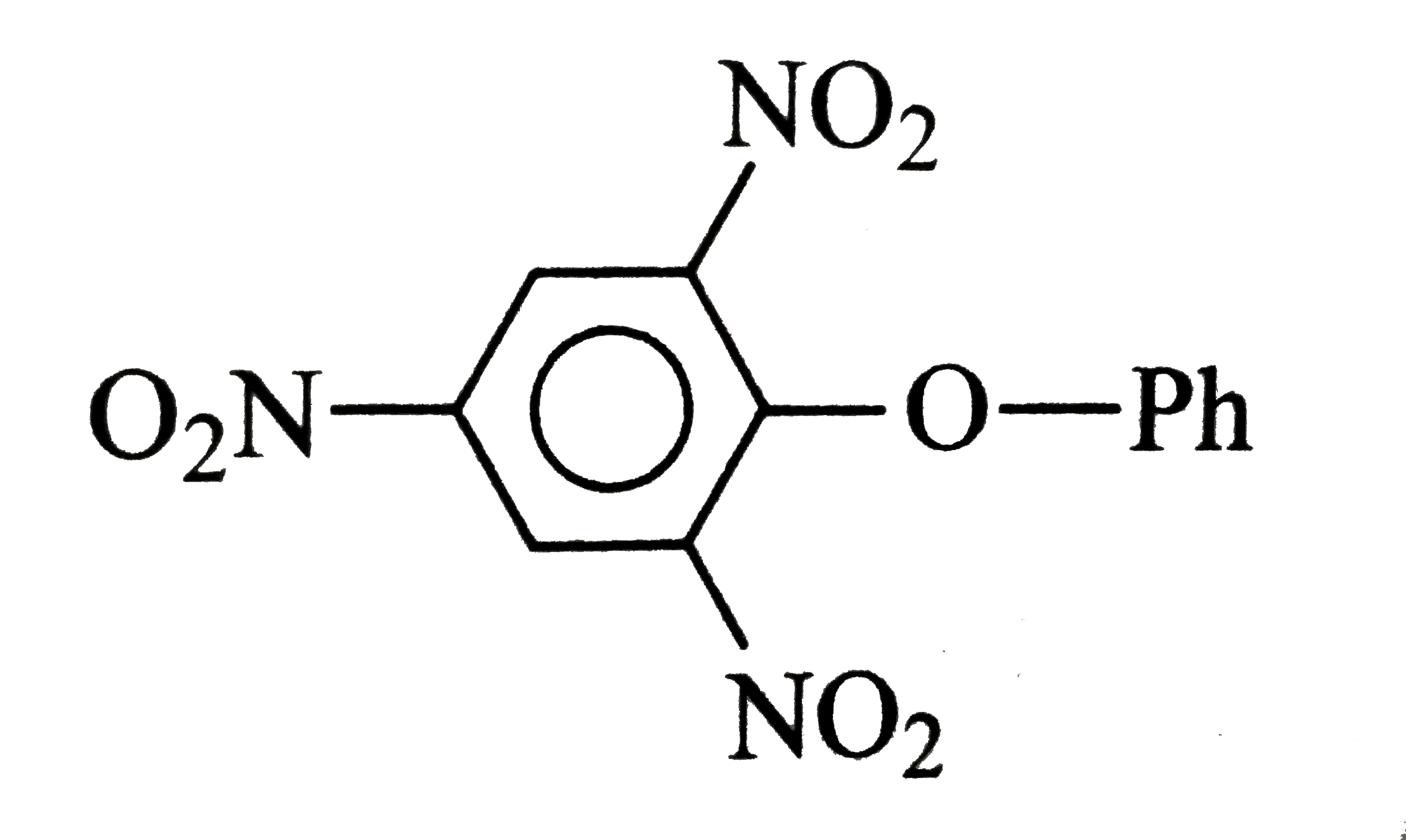இவ்வினையில் ________ (1) -- கருக்கவர் தொகுதி. (2) பீனால் தொகுதி-நீக்கப்படும் தொகுதி. (3) உருவாகிறது.
1), 2) மற்றும் 3)
1) மற்றும் 2)
2) மட்டும்
2) மற்றும் 3)
Topper's Solved these Questions
Similar Questions
A→B என்ற முதல் வகை வினையின் வினை வேக மாறிலி x−1min. A ன் துவக்கச் செறிவு 0.01 M எனில் ஒரு மணி நேரத்திற்குப் பிறகு A ன் செறிவு.
View SolutionSelect the correct answer:
a.
i. PhOC2H5 ii. Ph−−−O−−−Ph
iii. PhI iv. C2H5OC2H5
b.
i. p−−NO2−−C6H4−−OC2H5
ii. p−−NO2−−C6H4−−O−−C6H4−−NO2−−p
iii. C2H5−−O−−CH3
iv. p−−NO2−−C6H5−−I.
c.
i. C6H5CH2−−O−−Ph
ii. C6H5CH2−−O−−C2H5
iii. Ph−−O−−C2H5
iv. C2H5−−O−−C2H5
d.
i. C6H5CH2−−O−−C2H5
ii. C6H5−−CH2−−O−−Ph
iii. Ph−−O−−C2H5
iv. C2H5−−O−−C2H5 .
e.
i.
ii.
iii.
iv.
f.
i.
ii.
iii.
View SolutionRank the following compounds in the order of decreasing reactivity for bromination C_(6) H_(5) - overset(o+)N Me _(3), C_(6)H_(5) - CH_(2) - overset(o+) N Me_(3) , C_(6)H_(5)- NMe_(2), C_(6)H_(5)- CH_(3)
View SolutionArrange the following in increasing order of their basic strength:
(i) C2H5NH2,C6H5NH2,NH3,C6H5CH2NH2and(C2H5)2NH
(ii) C2H5NH2,(C2H5)2NH,(C2H5)3N,C6H5NH2
(iii) CH3NH2,(CH3)2NH,(CH3)3N,C6H5CH2NH2.
View SolutionSketch the following transformations : (1) underset("Propylbenzene")(C_(6)H_(5)CH_(2)CH_(2)CH_(3))tounderset(1-("p-Clorophenyl"))(p-CIC_(6)H_(4)CHhArrCHCH_(3)) (ii) underset("Cinnamic acid")(C_(6)H_(5)CHhArrCHCOOH)tounderset("Styrene")(C_(6)H_(5)CHhArrCH_(2)) (iii) C_(6)H_(6)toC_(6)H_(5)CHhArrCH_(2) (iv) p-CH_(3)-C_(6)H_(6)COOHtoC_(6)H_(5)-CH_(3) (v) C_(6)H_(5)CH=CHto"Sym"-C_(6)H_(3)(CH_(3))_(3) (vi) C_(6)H_(5)CH_(5)toC_(6)H_(6) (vii) CH_(3)-C=CHto"Sym"-C_(6)H_(3)(CH_(3))_(6) (viii) C_(6)H_(6)to1,2,3-C_(6)H_(3)(CH_(3))_(3) (ix) C_(6)H_(6)to(C_(6)H_(5))_(2)C(CH_(3))_(2) (x) C_(6)H_(6)to(C_(6)H_(2))_(2)C(CH_(3))_(2)
View SolutionGive the major product formed by heating the following ethers with conc. HI and mentioning SN1 or SN2 mechanism.
(i) C6H5−O−CH3(Methoxybenzene)
(ii) C6H5CH2−O−C2H5(Benzyl ethyl ether)
(iii) C6H5CH2−O−C6H5(Benzyl phenyl ether)


View SolutionHow many of the following ethers CANNOT be prepared by Williamson's synthesis?
CH3OCH2CH3,C6H5OCH3,(C6H5)2O,(CH3)3COCH3,(C2H5)2O,(CH3)3C−O−C(CH3)3
View SolutionThe major products that are formed by heating C6H5−CH2−O−C6H5 with HI
(A) 2C6H5I
(B) C6H5CH2IandC6H5OH
(C) 2C6H5OH
(D) C6H5CH2OHandC6H5I
View SolutionThe number of amines having pKb less than C6H5NH2 among the following is
P−CH3C6H5NH2,o−CH3C6H4NH2,m−CH3C6H4NH2,C6H5N(CH3)2,C6H5NHCH3,p−NO2C6H4NH2,p−CIC6H4NH2,C6H5CH2NH2
View SolutionIdentify A from the following: (i) C_(6)H_(5)COCH_(3) overset(A)to C_(6)H_(5)COOH+CO_(2)+H_(2)O (ii) C_(6)H_(5)COCH_(3) overset(A)to C_(6)H_(5)-underset(OH)underset(|)overset(H)overset(|)C-C_(6)H_(5) (iii) C_(6)H_(5)COCH_(3) overset(A)to C_(6)H_(5)CH_(2)CH_(3)+H_(2)O
View Solutionकौन - सा युग्म समावयवी है?
(i) C6H6 और C2H6
(ii) C4H5 और C4H10
(iii) C2H5OH और CH3OCH3
(iv) C5H5 और C6H12
View SolutionIdentify the electrophile and nucleophile in the following reactions :
(a) C6H5N2Cl+KI→C6H5I+KCL
(b) C6H5N2Cl+C6H5OH→C6H5N=N−C6H4OH
(c) C6H5N2Cl+CH3OH→C6H5OCH3
(d) C6H5N2Cl+H2O→C6H5OH
View SolutionIdentify the electrophile and nucleophile in the following reactions :
(a) C6H5N2Cl+KI→C6H5I+KCL
(b) C6H5N2Cl+C6H5OH→C6H5N=N−C6H4OH
(c) C6H5N2Cl+CH3OH→C6H5OCH3
(d) C6H5N2Cl+H2O→C6H5OH
View SolutionIdentify the electrophile and nucleophile in the following reactions : (a) C_(6)H_(5)N_(2)Cl +KI rarr C_(6)H_(5)I+KCL (b) C_(6)H_(5)N_(2)Cl +C_(6)H_(5)OH rarr C_(6)H_(5)N=N-C_(6)H_(4)OH (c) C_(6)H_(5)N_(2)Cl+CH_(3)OH rarr C_(6)H_(5)OCH_(3) (d) C_(6)H_(5)N_(2)Cl+H_(2)O rarr C_(6)H_(5)OH
View SolutionIdentify the electrophile and nucleophile in the following reactions : (a) C_(6)H_(5)N_(2)Cl +KI rarr C_(6)H_(5)I+KCL (b) C_(6)H_(5)N_(2)Cl +C_(6)H_(5)OH rarr C_(6)H_(5)N=N-C_(6)H_(4)OH (c) C_(6)H_(5)N_(2)Cl+CH_(3)OH rarr C_(6)H_(5)OCH_(3) (d) C_(6)H_(5)N_(2)Cl+H_(2)O rarr C_(6)H_(5)OH
View Solution
